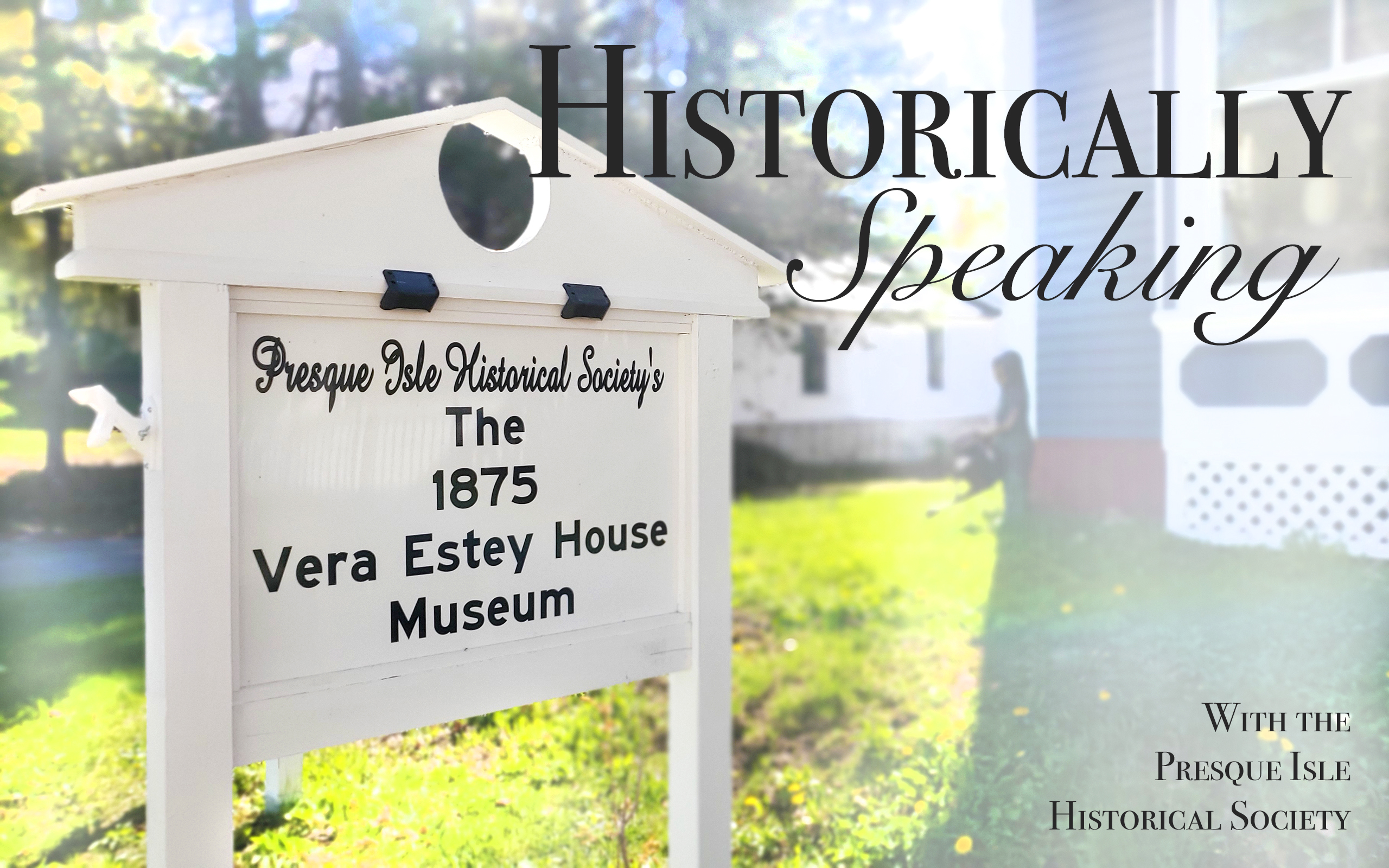Presque Isle is blessed with six museums: the James School, Presque Isle Air Museum, the Aroostook Band of Micmacs museum, Northern Maine Museum of Science at UMPI, the Maysville Museum, and the 1875 Vera Estey Museum. The Maysville and Estey museums are owned and operated by the Presque Isle Historical Society and both are designated as Distinctive Destinations by the National Register of Historic Places.
The Estey museum came to the society In 1994. Vera Estey bequeathed the house to the society with the caveat that it be operated as a house museum.  This small, but fascinating Victorian Era house has a great deal of history to tell and much of that is the story of the unique Miss Estey (1894-1992). Â
Women of that era were expected to marry and raise families. Those who did not were not looked upon kindly by society and were often referred to derogatorily as “spinster†and “old maid.â€Â In addition, it was quite unusual for women during that time to own businesses.Â
Vera was born in Canada in 1894 to John and Helen Estey. The family moved to Presque Isle in 1903, living originally on the Reach Road. In 1916, John Estey bought the house at 16 Third Street from Amasa Howe, a local store owner. This land was part of the original 640-acre land grant from the state obtained by Presque Isle founder Dennis Fairbanks, on which to build a mill and establish a settlement.Â
It is believed that the house was built around 1875. Pinpointing its exact age is difficult, as historians must research old tax records and look for a time period during which the tax assessment jumped significantly, pointing to the time when a building may have been built upon an empty lot. The first deed in the possession of the society is dated 1875.
In town, John Estey made his living selling farm equipment and as the local tax assessor. He also served as the president of the Fairmount Cemetery Association and as a member of the Mooseleuk Club, a local men’s sporting club that was probably most well known for bringing the beloved racehorse John R. Braden to town. Â
Vera graduated from high school in 1913. She worked as her father’s secretary and as secretary of the Fairmont Cemetery Association. The 1913 Presque Isle High School yearbook lists her favorite pastime as waltzing, favorite food as olives, and highest ambition as “creating the styles.â€
Vera never married. She did, however, have a suitor, a Boston dentist, Glendon DeWitt Estabrook. Estabrook was actually a hometown boy made good, having graduated from Presque Isle High School in 1908. It is rumored that she and her beau were caught in a “delicate situation†by her father. By today’s standards, it was probably something fairly innocent.
Her father did not want her to marry. Her beau allegedly offered her a diamond ring, but her father offered her a larger diamond to stay single. Vera chose the larger ring. She still owned this ring on the day she died.
Vera was “comfortably set†and did not need to work. However, she was an avid gardener and was known for her lilies of the valley and tulips. She raised and sold her flowers to the Boston Fresh Flower Market, traveling with her flowers to Boston by train. The north yard of the house during Vera’s day would have been rows and rows of tulips and lilies. Â
Vera’s parents were from the Victorian Era (1837-1901), when Queen Victoria reigned over the British Empire, and Vera was born during this era. As such, society uphold many Victorian traditions, among them how women of wealth were to act and function in society. Such women had expectations placed on them beyond average housewives. Besides cooking, cleaning and sewing, women of wealth were expected to be trained and skilled in the ‘finer’ things — knowing how to paint, do fancy needlework and play a musical instrument.  Â
These are all represented in the Estey House.  All of the oil paintings and needlework found in every room of the house were done by either Vera or her mother. Vera’s 1908 piano sits in the front parlor. Â
Perhaps in keeping with her high school ambition, Vera was a very well-dressed woman, purchasing her clothing while on trips to Boston. She was recognized for her extravagant hats. There is a photograph in the house of Vera in a suit wearing her famed ostrich plume hat. Interestingly, Victorian women wore outrageous bird feather hats, which initially caused the demise of many bird species and ultimately resulted in the establishment of the Audubon Society and the passage of the Plumage Act in 1921. Ostrich feathers were on the “OK†list. Â
Vera was reputed to be rather eccentric and not fond of children. Her neighbors often took pity on her during the holidays and would send over a plate of food. It is said that on one holiday in particular, the neighbor lady was quite busy entertaining her visiting relatives and had her teenaged daughter deliver food to Vera, who would not let her in. Although no real proof exists, it is thought perhaps that she did not actually dislike children as much as she resented the fact that her opportunity to have children of her own was taken from her by her father. After all, she had a hope chest and saved all of her childhood toys and books, leading us to believe she originally planned on having a family of her own someday. Â
Vera lived in her home at 16 Third Street until eight years prior to her passing, when she moved to the Presque Isle Nursing Home. She died in 1992 having lived to the ripe old age of 98. Â
The house is open for summer tours and at holiday time for Victorian Christmas at the Estey.
Kimberly R. Smith is the secretary/treasurer of the Presque Isle Historical Society.






